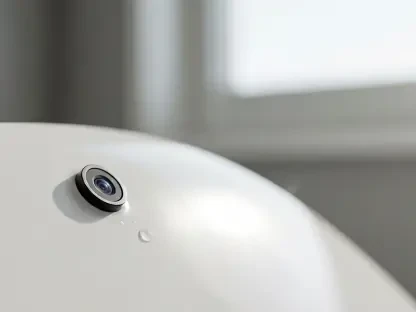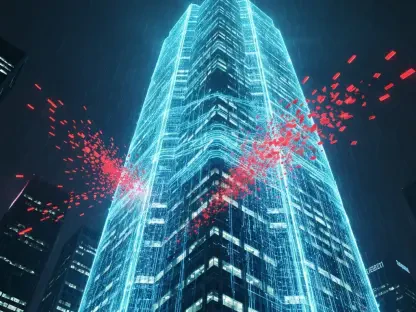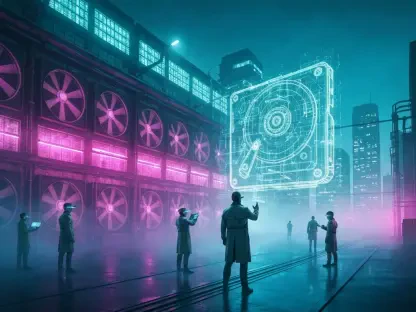I’m thrilled to sit down with Oscar Vail, a renowned technology expert whose deep knowledge of emerging fields like quantum computing, robotics, and open-source projects has made him a trusted voice in the industry. With a particular passion for consumer electronics, Oscar has been closely following advancements in drone technology. Today, we’re diving into the world of DJI’s latest offerings as we explore the key upgrades and innovations in the DJI Neo 2 compared to its predecessor, the DJI Neo. Our conversation touches on everything from enhanced safety features and intuitive control methods to improved performance and imaging capabilities, shedding light on what these changes mean for both new and seasoned drone users.
How does the DJI Neo 2 stand out from the original Neo in terms of overall design and purpose?
The DJI Neo 2 builds on the foundation of the original Neo, which was already a fantastic entry-level selfie drone—lightweight, affordable, and easy to use. The Neo 2, though, takes things up a notch by addressing some of the simplicity critiques of the first model. It’s a bit heavier at 5.3 ounces compared to 4.8, but that extra weight comes with a beefier design for better stability and performance. The purpose remains the same—catering to beginners and casual users—but the Neo 2 feels like a more polished, capable version with advanced features that make it safer and more versatile.
What makes the omnidirectional object detection system in the Neo 2 such a significant upgrade?
The omnidirectional sensing in the Neo 2 is a game-changer, especially for a drone in this price range. Unlike the original Neo, which relied on front and underside cameras for basic obstacle detection, the Neo 2 uses LiDAR and infrared sensors to map its surroundings in all directions. This means it can detect objects more accurately, even in low-light conditions, which drastically reduces the risk of collisions during automated flights. It’s a huge step forward for safety and allows for smoother, more confident operation in dynamic environments.
Can you explain how this improved detection enhances automated features like ActiveTrack?
Absolutely. With the original Neo, ActiveTrack worked decently but was limited by its basic camera-based detection, so it struggled in complex settings or with sudden obstacles. The Neo 2’s LiDAR and infrared system gives it a much clearer understanding of spatial relationships, so ActiveTrack can follow subjects more precisely and react faster to changes—like if something unexpectedly enters the drone’s path. This makes it a lot more reliable for capturing smooth, cinematic footage without constant manual adjustments.
Let’s talk about the new gesture control feature in the Neo 2. How does it work, and what’s the experience like?
Gesture control in the Neo 2 is super intuitive and honestly kind of fun. You face the drone with your palm up, and simple hand movements—like moving your palm left or right—control its altitude. If you use both palms and move them apart, the drone moves away; bring them together, and it comes closer. It’s almost like a natural extension of how you’d interact with a device. The experience feels futuristic and makes flying accessible without needing a controller or app, which is perfect for quick shots or spontaneous moments.
How does gesture control compare to the voice control option that was already in the original Neo?
Voice control, which is still available in the Neo 2 via a phone app over Bluetooth, is handy but requires you to be fairly close to the drone and can sometimes feel less precise in noisy environments. Gesture control, on the other hand, is more direct and doesn’t rely on an external device or perfect conditions—just your hands. I’d say gesture control feels more immediate and engaging, though voice control might still be useful for specific commands when your hands are occupied.
There’s a small display on the front of the Neo 2. What role does this feature play for users during flight?
That little monochrome display on the Neo 2 is a neat addition. It shows the current mode the drone is in, which is incredibly helpful since this drone is designed to be used standalone, often without a controller. Compared to the original Neo’s basic light-up panel, which was harder to see mid-flight, the display gives clear, instant feedback. It’s a small touch, but it boosts user confidence by letting you know exactly what the drone is doing without needing to check an app.
The Neo 2 is described as faster and more powerful. How does this translate to the flying experience?
The Neo 2’s performance upgrades are noticeable right away. It has a higher wind resistance rating—level 5 compared to level 4 on the original—which means it can handle breezier conditions up to about 10.7 meters per second without losing stability. It also tracks subjects at a faster 12 meters per second versus the Neo’s 8, so it keeps up better with moving targets like a cyclist or runner. Add to that a slightly longer flight time of 19 minutes versus 18, and you’ve got a drone that feels more robust and reliable in real-world scenarios.
Let’s touch on the imaging improvements. What do the Neo 2’s enhanced video capabilities bring to the table for users?
The imaging upgrades in the Neo 2 are pretty impressive for a budget drone. While both models have a 12-megapixel sensor, the Neo 2 steps up with 4K video at 60 frames per second compared to the Neo’s 30 fps, which makes for much smoother footage. It also offers a 100 fps slow-motion mode at 4K when manually controlled, and a wider aperture lens for better low-light performance. Plus, internal storage jumps from 22GB to 49GB, so you can record more without worrying about space. It’s a big leap for anyone wanting high-quality aerial content without breaking the bank.
What’s your forecast for the future of budget drones like the Neo series based on these advancements?
I think the Neo 2 sets a new standard for what we can expect from budget drones. Features like omnidirectional sensing, gesture control, and advanced imaging are trickling down from higher-end models, and I expect this trend to continue. In the next few years, we’ll likely see even smarter automation, better integration with apps for creative editing, and maybe even more compact designs without sacrificing power. The focus will probably remain on accessibility—making drones easier and safer for everyone to use—while pushing the boundaries of what an affordable device can do. I’m excited to see how this space evolves!









